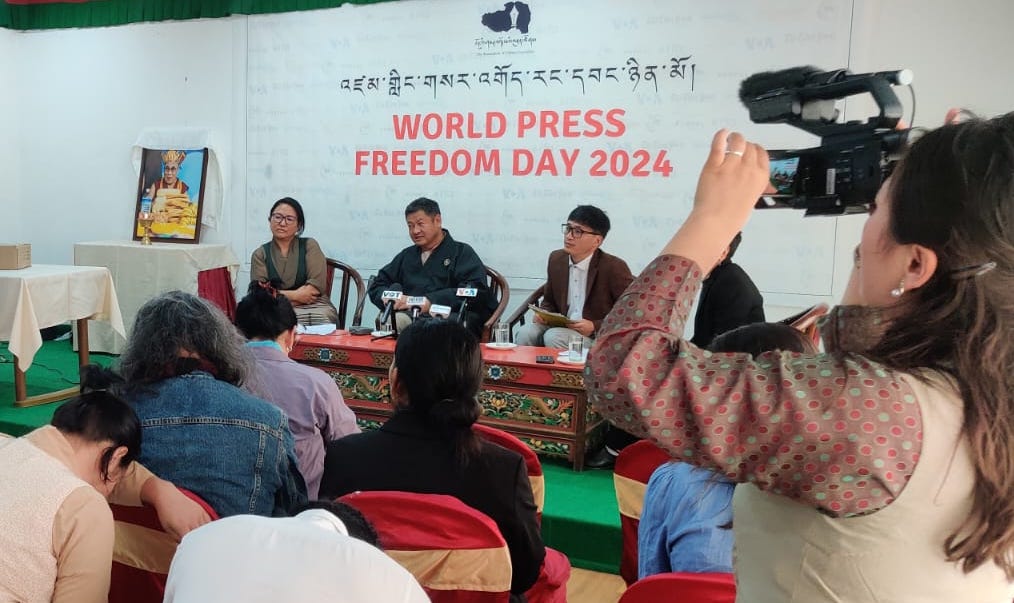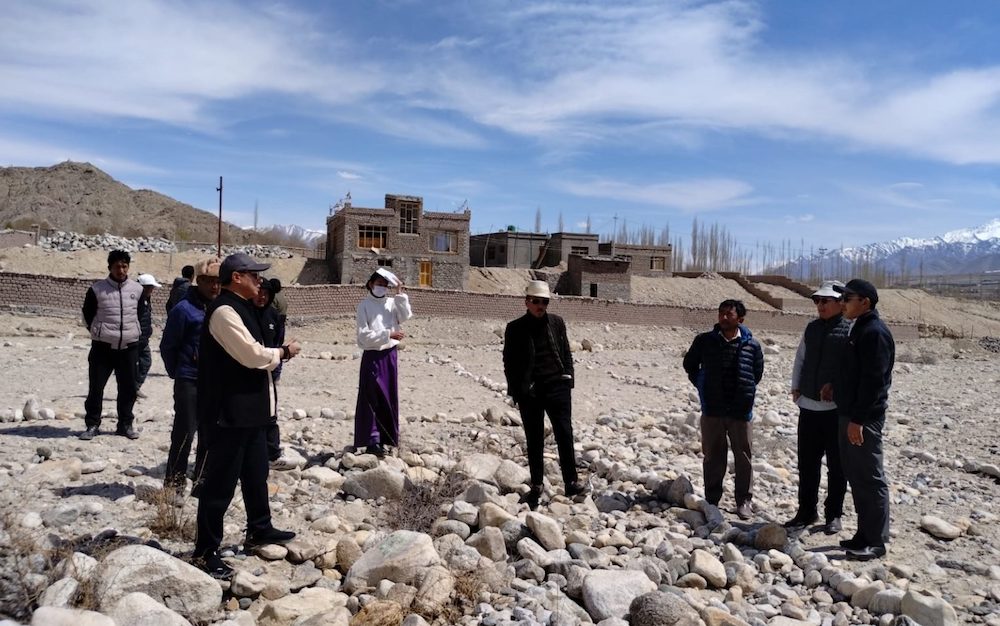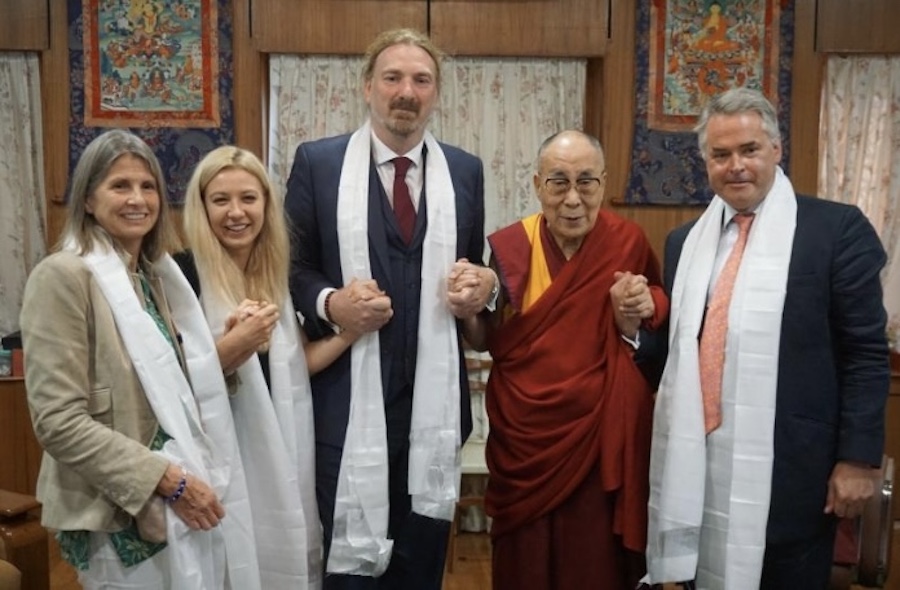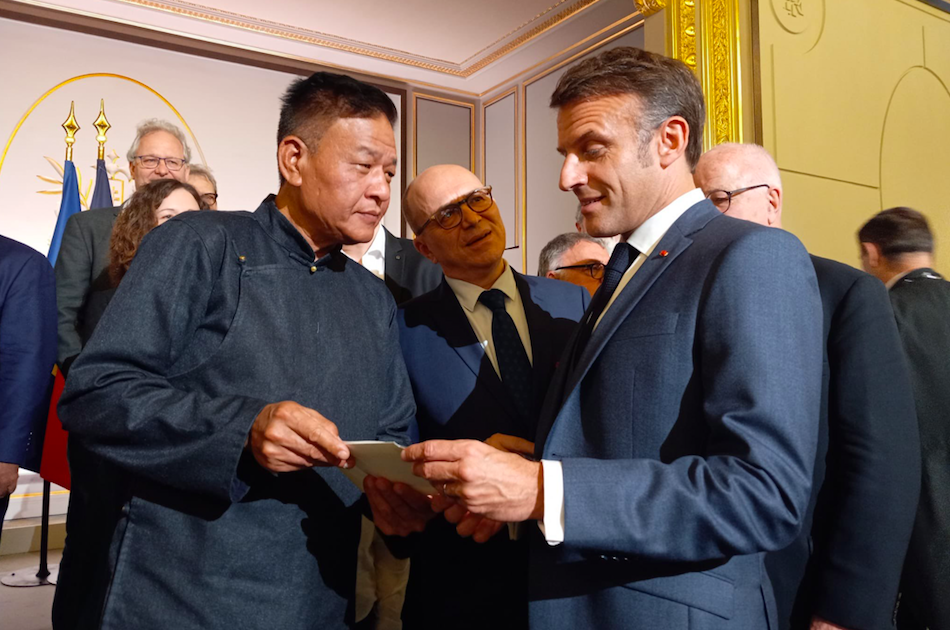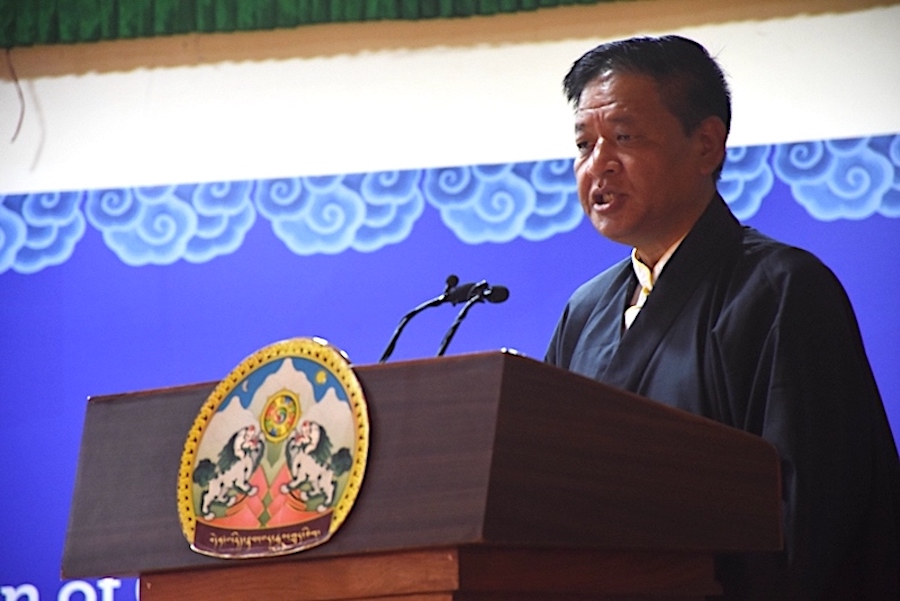By B Raman
In its anxiety to further improve relations with China and to wean Beijing away from Islamabad, has the government of India taken the first step towards writing off the Dalai Lama and the Tibetans and abandoning any role by India in helping to preserve the unique Tibetan culture and Tibetan school of Buddhism?
This question first arose in the minds of Tibet-watchers after the recent incident in which, perhaps for the first time, the government of Nepal complied with a Chinese demand to detain and hand over 19 Tibetan refugees fleeing perceived persecution in their traditional homeland, which is recognized by India and the rest of the world as a part of China. Many, including this writer, suspected that Kathmandu might not have taken a serious and troubling step like this without a nod from New Delhi.
The US reportedly expressed its concern and unhappiness over this action of the Nepal government. Despite this, there are reports that similar action against another group of refugees is under way.
This question becomes even more troubling after the six-day high-profile visit of Atal Bihari Vajpayee, the Indian Prime Minister, to China from June 22. The visit, which took place a year before parliamentary elections in India, was marked by much hype, apparently with an eye on the polls. “Historic”, “path-breaking”, ” a new beginning” “never before have such productive discussions been held” were some of the expressions used by the spinmasters of the government and dutifully played up by the embedded journalists who had accompanied the premier.
To find more objective and critical accounts, one has to search for the reports of journalists who were not accorded this privilege and honor and hence traveled independently, or those who stayed behind in India and viewed the visit from there. The fact that some of this kind felt troubled by the way their fraternity went overboard in helping the government to project the visit as “something like this has never happened before” would be evident from the comments of Inder Malhotra, a highly respected senior journalist, who has covered Sino-Indian relations right from the first decade of India’s independence, starting in 1947.
He wrote in The Hindu, a prestigious national newspaper, on June 26, “As has happened all too often in the past and is most certain to be repeated in the future, the media contingent accompanying him went into a tizzy of exaggeration and hyperbole.”
Shorn of the hype, the outcome of the visit is partly disconcerting, partly questionable and partly gratifying. The disconcerting aspect relates to Sikkim and Tibet. Until the middle of the 1970s, Sikkim used to be a protectorate of India, which had overall responsibility for its defense and foreign relations. Barring this, the territory enjoyed some autonomy under a ruler called the Chogyal. He got married to an American student called Hope Cook, who had come to Sikkim ostensibly for research. The Indian intelligence and Indira Gandhi, the then prime minister, viewed her as a mole of the US’s Central Intelligence Agency (CIA), allegedly planted on him to steer him in the direction of independence for his territory.
One could never prove whether or not she was a CIA mole, but it was a fact that he came under her fascinating spell and started moving in the direction of independence. He and his wife, for reasons unconnected with India, became unpopular and a movement against them resulted in their overthrow and the territory becoming a state of India, like any other state, thereby ending its special status.
Chinese intelligence, too, was as much concerned as its Indian counterpart over her presence and activities from Sikkim, which is on China’s border. Despite this, Beijing strongly condemned what it described as the Indian annexation of Sikkim. It viewed it as one more instance of Indian “hegemonism” in action.
China had never claimed Sikkim as its territory and never disputed its pre-1975 status as an Indian protectorate. Thus, Sikkim is a non-issue in the long pending border dispute between the two countries. Beijing’s apparent objection was to India’s ending its special status and making it an integral part of India. Until – even after Vajpayee’s visit – it has not recognized it as an integral part of India, but Vajpayee has claimed that the first steps towards such Chinese recognition have been taken with an agreement called a memorandum concluded during the visit for the resumption of border trade through Sikkim.
The first step towards the resumption of trans-border trade was taken by the two countries through a memorandum signed in December 1991, which designated certain points for the trade and through a protocol for regulating it signed in July 1992. The points identified under that memorandum for border trade did not include the Sikkim sector.
It is said that in 1997 China took the initiative in suggesting the resumption of traditional trade through Sikkim too. The matter was under negotiation between the two countries since then. There are two possible routes for the border trade through Sikkim – via the Nathu La pass and via Jalep La in southeastern Sikkim. Before the Sino-Indian war of 1962, most of the border trade took place through Jalep La. From Jalep La, the Chinese/Tibetan traders used to enter Kalimpong in West Bengal, where China had been allowed by the Jawaharlal Nehru government to set up a trade post, which was supervised by a Chinese consulate in Kolkata (Calcutta).
Following the deterioration of relations between the two countries, which led to the war of 1962, the government of India ordered the Chinese trade post at Kalimpong and the consulate at Kolkata to close down. The Indian intelligence suspected them of indulging in espionage and subversion. Till today, no government in New Delhi has agreed to their being re-opened, despite the improvement of bilateral relations, reportedly because of continued misgivings over the wisdom of such action.
It is said that the original Chinese proposal was for the resumption of the border trade through the pre-1962 Jalep La/Kalimpong route or through both the Nathu La and Jalep La routes. Apparently, the government of India agreed only to the Nathu La route, which would not require the re-opening of the Chinese trade post at Kalimpong.
In the buildup that preceded the visit of the prime minister to China, this impending memorandum on the resumption of border trade through Sikkim was projected as a major breakthrough of great political significance since it amounted to a Chinese recognition of Sikkim as an integral part of India. In my earlier article titled Understanding China: The view from India, written before the prime minister’s visit, I expressed my doubts about the validity of this projection.
Even as Vajpayee was in Beijing, a Chinese Foreign Ministry spokesman punctured the Indian euphoria by clarifying that it was nothing of the sort. He described the Sikkim question as an “enduring legacy” of the past and said that “it cannot be solved overnight”. Despite this, New Delhi has maintained that the memorandum amounted to a de facto recognition of the Indian position by China, even though it might not amount to a de jure recognition. In support of this, it has been pointed out that the preamble of the memorandum talks of the two countries being “desirous of opening another pass on the India-China border” for border trade. If Sikkim’s border with Tibet constitutes India’s border with China, the inference is that Sikkim is a integral part of India. So the argument goes, definitely with some validity.
China’s renewed interest in a presence in Sikkim, which resumed trade would involve, and, ultimately in Kalimpong, has economic as well as political motives. The economic motive is obvious and needs no explanation. The political motive arises from the fact that in addition to the route through Nepal, Tibetan political refugees fleeing perceived persecution have preferred the Jalep La-Kalimpong route. The more sensitive refugees, who had held offices of authority in Tibet, had avoided the Nepalese route, as they were not sure even in the past of how the Nepalese authorities would handle them. When the Dalai Lama and his entourage fled Tibet in the 1950s, they used the route through Kalimpong.
The Chinese administration in Lhasa had always been anxious to plug these routes of escape for the political refugees. With the Nepalese route now apparently ruled out, the only safe route which remains for them is through Sikkim. By signing this memorandum, has the government of India consciously or unconsciously helped the Chinese in their efforts to plug this too? Enhanced Chinese presence in this sector, which resumption of trade would involve, could have a deterrent effect on refugees wanting to flee Tibet through the Sikkim route.
The over-attention during the visit to Chinese sensitivities over the Tibetan Autonomous Region (TAR) of China with little attention to Indian sensitivities either over Sikkim or over China’s nuclear and missile supply relationship with Pakistan is equally troubling. According to the prime minister, as quoted in the media, he did not raise the Pakistan issue at all during the talks.
A joint declaration signed by the two prime ministers says, “The Indian side recognizes that the Tibet Autonomous Region is part of the territory of the People’s Republic of China and reiterates that it does not allow Tibetans to engage in anti-China political activities in India. The Chinese side expresses its appreciation for the Indian position and reiterates that it is firmly opposed to any attempt and action aimed at splitting China and bringing about independence of Tibet. The Indian side recalled that India was among the first countries to recognize that there is one China and its one China policy remains unaltered.”
The Chinese did not hesitate to emphasize that there is only one China, of which Tibet is a part, and insist that this be included in the joint declaration. Is it not the responsibility of any government in New Delhi to similarly emphasize that there is only one India, of which Sikkim is a part, and insist on this being included in the statement too. Our prime minister’s apparent acceptance of a Chinese oral assurance of a change in their Sikkim policy in the future, without insisting on this being recorded in writing, brings to mind Indira Gandhi’s acceptance in 1972 of Pakistan’s Zulfiquar Ali Bhutto’s oral assurance that he would accept the Line of Control in Jammu and Kashmir as the international border after preparing public opinion in Pakistan to accept it, without reducing his commitment to writing in the Shimla Agreement. He subsequently denied giving any such assurance. We never learn from our follies.
The India-China (Panchsheel) Agreement on Tibet signed on April 29, 1954, had referred to Tibet as the “Tibet region of China”. Thereafter, when the then Indian prime minister Rajiv Gandhi visited China, a Sino-Indian joint press communique issued on December 23, 1988, said that “Tibet is an autonomous region of China”. It said, “The Indian side reiterated the long-standing and consistent policy of the government of India that Tibet is an autonomous region of China and that anti-China political activities by Tibetan elements are not permitted on Indian soil.”
Strictly speaking, New Delhi is right in saying that substantively there has been no change in India’s position on Tibet. What is new and troubling is the much stronger language used now and the Chinese insistence on this stronger formulation. In a media briefing, a Chinese Foreign Ministry spokesman even went further than this and claimed that the Indian prime minister had accepted that the TAR is an “inalienable” part of China, but this expression is not found in the joint declaration.
Among the troubling questions that come to mind are:
- The Tibetan exiles have always alleged that the present TAR is smaller than the Tibetan region first occupied by China. According to them, part of the Tibetan territory was separated by the Chinese after occupation and merged with adjoining provinces. What was left was named the TAR. By accepting the new formulation, has India consciously or unconsciously legitimized the Chinese action in doing so?
- Will India’s apparent yielding to Chinese pressure for a stronger formulation mark the beginning of further Chinese pressure on India to stop the non-religious activities of the Dalai Lama’s setup in Dharamsala in India?
- Will it cut the ground from under the feet of the Dalai Lama in his efforts to achieve genuine autonomy for the homeland of the Tibetans and protection of their culture and religion through talks with Beijing?
Apparently anticipating criticism back home of the new formulation, the prime minister has claimed that the Tibetans were consulted during the negotiations. The Hindu of June 28 has reported as follows, “The prime minister revealed that ‘Tibetan friends’ had been consulted by the government prior to his tour and even during the course of the China visit. ‘They are satisfied with India’s spin’.”(The prime minister’s words as claimed by the paper) What spin, one wonders. A spin on the Chinese or Indian people?
While Dharamsala has not yet come out with any official reaction, a web site maintained by Tibetan exiles abroad has described Vajpayee’s discussions with the Chinese on Tibet as “semantic diplomacy” and said, “While political scientists may be able to explain the implication of the difference between these formulations, the statement contained in the joint declaration seems to be an attempt to meet Chinese desire to legitimize control over Tibet. However, the fact that there was hot discussion on the formulation seems to be clear from leaked reports released by Xinhua in which China talked about India recognizing Tibet as an ‘inalienable’ part of China. The joint declaration does not contain any such reference’.”
The uncertain aspect of the outcome relates to the agreement to “each appoint a special representative to explore from the political perspective of the overall bilateral relationship the framework of a boundary settlement”. Is this just another layer of cosmetics to conceal the lack of significant progress in the ongoing negotiations at the official and expert level to find a solution to the border dispute, or does it mark an innovative mechanism to expedite the search for a solution in a time-bound manner?
The prime minister has been quoted as saying, “The kind of talks that I have had on the boundary issue during this visit have perhaps never taken place before.” Only time can say how far his optimism is justified.
The gratifying part of the visit relates to the various measures agreed to for further promoting bilateral trade and strengthening economic cooperation. This is the non-controversial part of the outcome and needs no comment.
B Raman is Additional Secretary (ret), Cabinet Secretariat, Government of India, and presently director, Institute For Topical Studies, Chennai; former member of the National Security Advisory Board of the Government of India. E-Mail: corde@vsnl.com. He was also head of the counter-terrorism division of the Research & Analysis Wing, India’s external intelligence agency, from 1988 to August, 1994.





